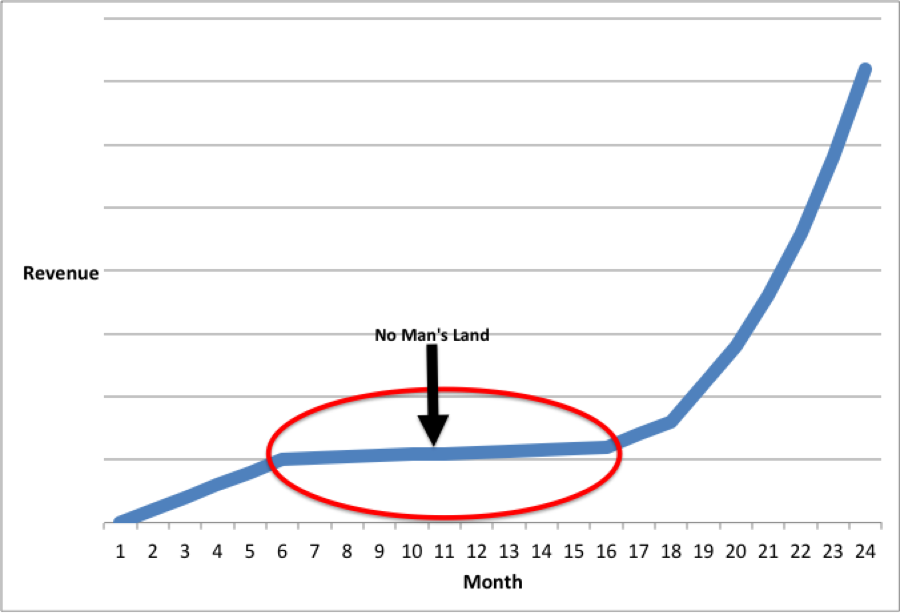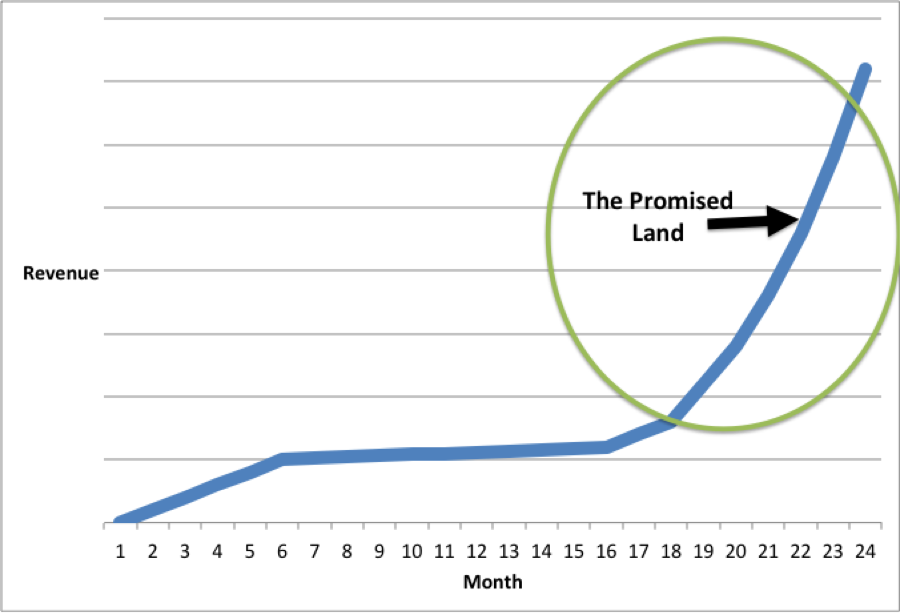How To Focus Your Business So You Win
By Brett Fox at www.brettjfox.com
“I don’t care about how many new customers you added this month! Why isn’t revenue going up?” One board member asked me during a board of directors meeting.
The company was adding customers at a fast pace, but revenue was not where we wanted it to be yet.
We were in No Mans Land:
No Mans Land is the worst place for you to be:
- In No Mans Land you can do no right
- In No Mans Land you might get fired
- In No Mans Land your employees can lose hope and quit or…
- In No Mans Land your employees can panic and demand change
- In No Mans Land your investors can get frustrated and not keep funding you because…
- In Mans Land you can’t predict when you will actually come out of No Mans Land
No Mans Land sucks!
Yet almost every company goes through No Mans Land.
But you need hope when you are going through No Mans Land. Not just hope, but a compass that leads you to The Promised Land:
The Promised Land is a wonderful place:
Palm trees, beaches with cool breezes, and riches galore await you in The Promised Land.
You just need to cross the desert to get there. And sometimes you seemingly need to get there without a compass.
However, you always have a compass. Your compass is your key metric.
In our case it was customers:
We could see that customers were growing at really good pace. We also knew the value of a customer (at maturity) was $30,000/year.
Keep adding customers and the revenue will follow was our mantra. Indeed the revenue per customer kept increasing.
It was painful, and there were many moments when we felt we weren’t making any progress. However, the number of customers kept growing, and, eventually, we were on our way to The Promised Land.
Actually, our original mantra was web traffic:
- Keep increasing unique visitors to our website and…
- Web traffic will lead to customers requesting free samples of our products and…
- Sampling our products will lead to paying customers and…
- Paying customers will buy more and products over time so…
- We will end up in The Promised Land
The Simple Question Any Business Owner Needs to Ask
Identify your key metric (more on this later) whatever it is. Then you need to ruthlessly focus your attention on this key metric by asking this simple question:
“Is what I am doing or what my team doing helping us achieve the key metric?”
- Keep doing what you are doing if the answer is yes
- Immediately stop what you are doing if the answer is no
Management can be that simple. There’s no need to overcomplicate matters. Just focus and keep moving.
So How Do You Identify Your Key Metric?
First, a story from my past.
Years ago, I was running a division of a company. We had the chance to develop a custom product that would give us $10M in revenue from one customer.
More importantly the successful development of the product would give us the ability to do business with the largest potential customer in our industry for years to come.
There was just one small problem:
We had to develop the product and deliver it to our customer in four months.
This was unheard of back then in the chip business, but it was doable.
The key was having the engineering team (on two continents and three different sites) work on a daily schedule for their part of the project. Then we reviewed progress on daily basis to see where we stood.
This was our key metric: Reviewing progress daily.
We focused the resources of the team on any area that was behind schedule. We brainstormed ideas and we refocused team members. In short we did whatever was necessary to get back on schedule.
We ended up delivering working first silicon (a first article that was production ready) on the exact day promised to the customer.
The customer gave us an award for being their top vendor, and…
A long-term relationship was born.
Takeaways from this and other experiences I had:
- Break down your problem (your product or service) into small definable chunks
- Focus only on the smallest chunk to begin with
- Measure it on a regular basis
Congratulations, you have identified your key metric!
A word of caution:
Your key metric will change over time. Once you achieve your key metric, then it’s time to focus on the next key metric.
Then you keep repeating the process again and again over the life of your company.
Make it fun!
Achieving your goals should be celebrated. One of the smartest things we did was making the progress versus our goal very public. And we told the team they would be getting a reward for achieving the goal.
The reward could be anything from free movie tickets, to a Starbucks gift card for small goals.
Big goals might be rewarded with a bonus check and a party. In this case, each member of the team received a bonus, and we had a party to celebrate.
You’re building momentum
Make a timeline showing your progress versus your achieving goals. It’s a great way to remind yourself and your team of all you have already accomplished.
You realize that you’ve already climbed a large part of Mount Everest already.
Author’s note: This article is dedicated to my Dad who passed away nine years ago. My Dad’s favorite words of advice were “Don’t focus on the money, focus on the opportunity and the money will follow.”
How right he is! I miss you Dad!
Like what you read? Click here for my best business, career, and financial guidance.
Picture: Depositphotos


